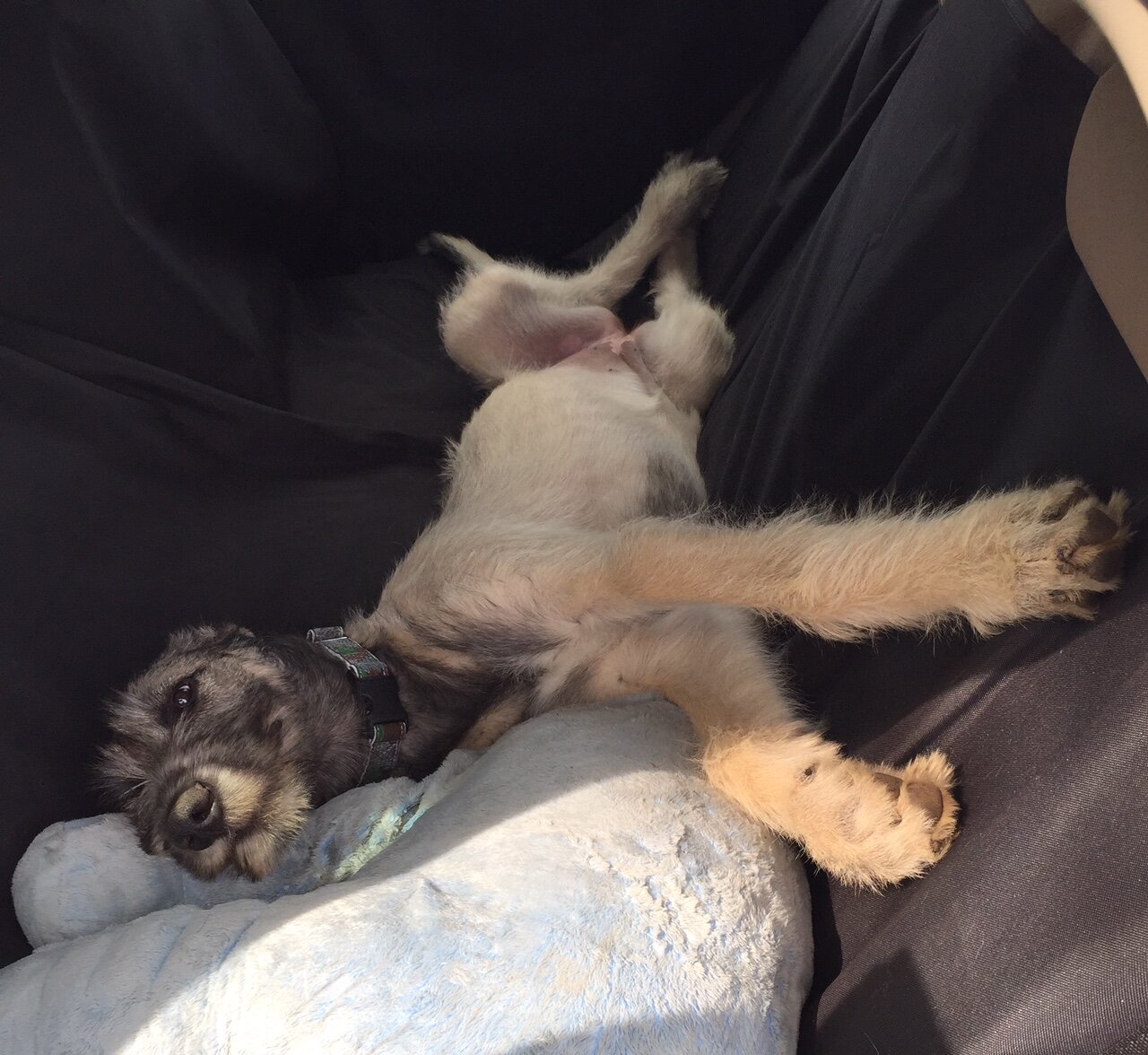Here are a number of resources that explain the processes of desensitization and counter-conditioning in training. These are among the most simple and effective techniques for changing behavior, especially when that behavior is motivated by underlying fear or anxiety. Please watch these first two videos:
The Basic Process of Desensitization & Counterconditioning For Your Dog | Dog Training
Counter Conditioning: a Visual Explanation
Here are the most important takeaways:
You must break your final goal down into small steps. For example, for dogs who don’t like getting into the car, you may work on first getting within a few feet of the car with all the doors closed, then approaching while the back door is open, then taking treats from the ledge where the door opens, then off the back seat, and so on.
At each step, your dog should be enjoying the training. If he is reacting negatively (such as running away, being wary of the treat, growling, or barking), that means that you need to go back to an earlier step.
Do not move on from your current step until you see that your dog has a happy response (such as wagging his tail, looking at you expectantly, or running to you every time he hears the trigger).
We are most likely going to be using lots of treats during this training - here are tips about choosing healthy, effective treats.
If you are properly breaking down the goal into small steps, you don’t need to worry that your dog will learn to bark or growl in order to get treats - he’s not rehearsing that behavior anyway, so he’s just learning that trigger = yay, treat!
It is critical that you avoid putting your dog into situations he can’t handle. For example, if he tries to bite every time he is picked up, avoid doing so. If he barks wildly every time he hears the doorbell, cover the bell and put a note on your door for people to call you when they arrive instead.
For those times that life happens, and your dog starts negatively reacting (barking, growling, lunging, etc), you should get him out of that situation as soon as possible. That might mean that you use treats to distract him. That’s okay, as long as it’s only happening a small percentage of the times that he is exposed to the trigger. The rest of the time, set him up for success with your training sessions.
Watch out for trigger stacking:
Here are videos that show specific examples of behavioral issues being resolved by the use of desensitization and counter-conditioning:
Barking and lunging at scooters - how Diesel's behaviour was changed (CASI) (this can be adapted for dogs who bark or lunge at strangers, people on bikes, cars, or other dogs)
Handling Shyness - Dog Training (“handling shyness” refers to a dog being wary of hands coming toward him or being manhandled)
Puppy training - Restraint (this is for teaching dogs to be comfortable being restrained, as for vet exams)
Chirag Live: Teaching Dogs to be Comfortable with Buster Collars (“buster collar” here refers to the “elizabethan collar” or “cone of shame” that dogs wear while recovering from injury or surgery)













